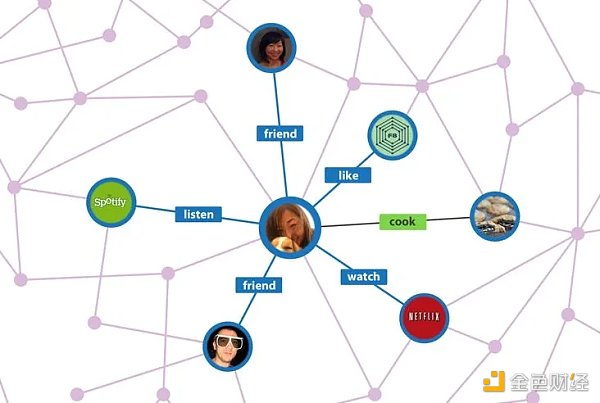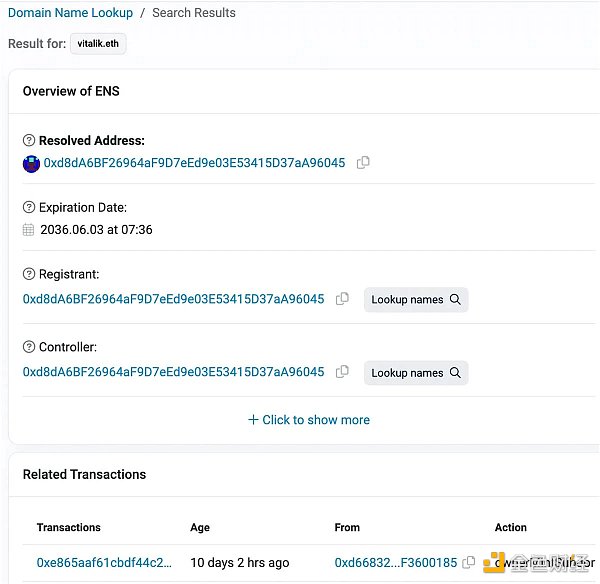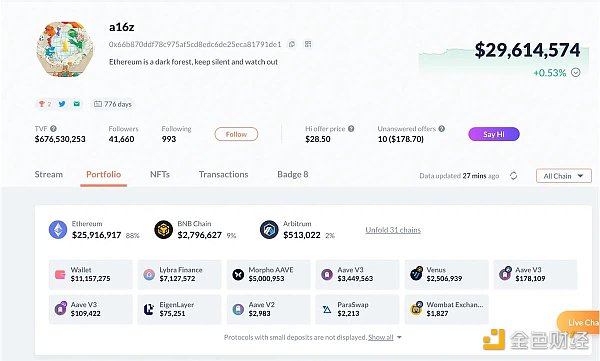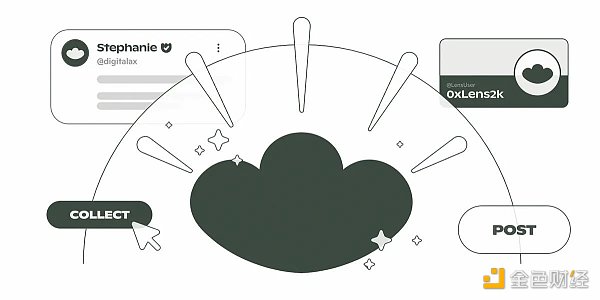Exploring the future of Web3 social Building social graphs to solve customer acquisition problem.
Building social graphs for customer acquisition in Web3.Author: LianGuaiUL VERADITTAKIT, Partner at LianGuaintera Capital; Translation: Deep Tide TechFlow
This article is the first in a series of decentralized social articles written by LianGuaiUL, a partner at LianGuaintera.
This series explores how today’s technology and trends address a range of issues in decentralized social networks, providing specific explanations and explorations for each problem.
In 2017, a group of researchers from the MIT Media Lab claimed in Wired magazine that decentralized social networks would “never succeed.” In their article, they listed three impossible challenges:
- Delphi Digital Researcher UniswapX is Changing the Landscape of DEX
- CME Group will launch BTC and ETH reference rates for Asian investors.
- Trump has nearly $5 million in Ethereum NFT licensing fees, with revenue of nearly $4.9 million.
(1) The problem of attracting (and retaining) users from scratch
(2) The problem of handling user personal information
(3) The problem of user-oriented advertising
They believed that in these three cases, existing tech giants such as Facebook, Twitter, and Google, due to their extensive economies of scale, have left no room for any significant competition.
Now, it seems that what was once considered “impossible” is no longer so far-fetched. We seem to be in the dawn of a conceptual transformation in social media networks. In this three-part series (this is the first part), we will explore how new ideas in decentralized social (DeSo) solve these “ancient” problems, including:
(1) Solving the cold start problem with an open social layer
(2) Solving the problem of user identity with proof of personhood and cryptographic techniques
(3) Solving the revenue problem with a token economic model and incentive mechanisms
Social Graphs and the Cold Start Problem
Social media platforms always face the cold start problem: attracting and engaging users without an existing user base or network effects. Traditionally, emerging social media startups like Snapchat, Clubhouse, or the recent Threads have tried to overcome this problem through powerful marketing and pure marketing capabilities. By attracting everyone’s attention at the right time, whether through novel user experience design, media headlines, or FOMO, they launched massive registration blitzes, creating user barriers on the platform almost immediately. For example, Threads successfully attracted 100 million users in just 5 days.
However, these successful marketing campaigns often face an existential crisis: how to retain all these users and continue to generate new content (and profits)? This was the problem faced by Clubhouse before, and it is currently the problem faced by Threads. As these apps disappear, the profitable user social graphs and profiles built by these platforms will also disappear, requiring aspiring social media networks of the future to repeat the challenging marketing strategies to restart their networks.

The fundamental problem behind all of this is that in Web2 social networks, social graphs (annotating relationships between users) are inseparably intertwined with social applications themselves (such as Facebook, Twitter, or Instagram). These two levels are symbiotic: the novelty of the application drives the development of the social graph, which in turn becomes the main barrier to social media applications. Despite various issues, the reason users don’t leave Facebook, Twitter, and Instagram is simple: all of our friends are there.
However, what if we separate social graphs from social applications? Even if Clubhouse (or Threads) disappears, we can still use the social graphs created on them to easily launch another social application. This is Web3’s response to the cold start problem.
Using a public chain as an open social graph

In a sense, public blockchains like Ethereum themselves are social graphs. If I look up an ENS domain or a person’s wallet address on Etherscan, I can view that person’s on-chain social profile: what assets they hold, who they transact with, and infer which communities they belong to.
This on-chain social profile seems to be a natural starting point for a new decentralized social network, and in fact, some companies seem to be exploring this path.

For example, Debank converts the hexadecimal dumps on Etherscan into readable portfolios or “profiles” and provides the functionality to send messages to these different individuals, thus leveraging this on-chain data to launch a message-style social network. 0x PPL has also taken a similar route, attempting to build a Twitter-style social network using on-chain user profiles. This general strategy of making raw transaction data readable and interpretable to “ordinary” users using advanced large-scale language models like GPT-4 has already gained momentum. For example, it is said that Cymbal uses GPT to generate conversation summaries for transactions and trends, creating a hybrid of data resources, news sources, and future social networks.
Building native social graph protocols
Depending solely on public blockchain data (such as Ethereum) poses a problem in that this data is not rich enough for social applications. Because public blockchains were built primarily for financial applications, not social applications, the on-chain native data collected, such as transaction history, account balances, and token data, may not be the most useful for social networks.

Unlike simply using native on-chain data as a social graph, one idea is to build a new, dedicated social graph protocol on top of the public blockchain. For example, Lens Protocol leverages a key observation that there are common factors of social interaction in social applications, which they abstract as different on-chain behaviors such as “post”, “comment”, and “mirror” (i.e., share or repost).
Farcaster also has similar abstractions in its social graph, such as “cast” (post), “reactions” (likes), and “amp” function, where users can recommend other users worth following. The main difference between Farcaster and Lens lies in their technical implementations – Lens puts all content on the Polygon blockchain, while Farcaster places its ID registry on Ethereum itself and runs its social graph in the form of a Delta graph on L2.
A third notable social graph protocol is Cyberconnect, which focuses more on link aggregation through its link 3 mechanism (including on-chain and off-chain sources) and focuses on events and fan clubs as initial use cases.
For these social graph protocols, the key is that they don’t necessarily build top-level social applications like Twitter, Facebook, or Instagram. Instead, they provide an open social graph layer (essentially an SDK) that is needed to build and extend these top-level applications. As mentioned earlier, the core advantage of doing this is that even if a once-successful social application disappears (similar to Clubhouse), the generated social graph can still be used by other developers. Therefore, it only takes one marketing campaign or a successful application to launch the entire ecosystem.
Designing Decentralized Social Media from Scratch
The third strategy is to build a decentralized solution from scratch. The premise is that social media applications are the foundation of our digital experiences, so there needs to be a dedicated blockchain (or other decentralized) solution that localizes the basic operations of social media applications, rather than implementing them through protocols built on infrastructure originally designed to support financial use cases. In short, we need a “application chain” for social media.

One of the most notable projects in this strategy is DeSo, which is building an L1 blockchain focused on social applications. Unlike other mainstream public blockchains that focus on “transactions per second”, DeSo is dedicated to optimizing “posts per second” and the communication and storage needs of social applications. Generic blockchains like Ethereum may not necessarily optimize for this. On top of this L1 blockchain, DeSo plans to build various social applications, including long-form content (like Substack), short-form content (like Twitter), and Reddit-like applications.
Other decentralized social media platforms, such as Bluesky and Mastodon, can also roughly follow this strategy of designing decentralized social media from scratch. Strictly speaking, they are not blockchain-based solutions, but rely on server systems to ensure sufficient decentralization of posts. For example, Mastodon uses a system similar to email, where users can choose between different service providers (like Gmail, Hotmail, or iCloud). Just as an organization can set up and customize its own mail server, each “instance” on Mastodon will be a self-managed and customizable community. On the other hand, Bluesky is an application developed based on the open AT protocol, which is essentially an open social graph with APIs such as “follow”, “like”, and “publish” optimized for Twitter-like social media platforms.
DeSo, Mastodon, Bluesky, and other projects have in common that they reject the notion that existing public blockchain designs (represented by EVM) are suitable for social networks. While this approach undoubtedly provides these projects with the ability to make more fine-grained control design decisions and user experiences, it also cuts off potential connections and cross-impacts with mature elements in the DeFi, existing NFT communities, and the Web3 ecosystem. Additionally, it remains to be seen to what extent these solutions are “decentralized”, especially in environments where their decentralization is not guaranteed by public blockchains. Will these solutions eventually bundle social graphs with social applications like existing social networks, or will they fully decentralize the social graph layer and attract various applications and development teams? This is a key question for the future of Web3 social.
We will continue to update Blocking; if you have any questions or suggestions, please contact us!
Was this article helpful?
93 out of 132 found this helpful
Related articles
- Cryptocurrency mining companies establish a Digital Energy Committee to strengthen lobbying power in Washington
- Exploring the current ecosystem and future development trends of Intents in Web3
- Interpreting the latest proposal on achieving x-rollup interoperability using a shared ordering layer
- Must-read in the evening | Upgrading the layout of Cancun OP or ARB, who is the better choice?
- Quick Look Why is Friend Tech, a newly emerging social application in the Base ecosystem, trending?
- Half a year has passed, Hong Kong has taken away sixty thousand people.
- 2023 On the eve of the L2 explosion, an analysis of various zkEVMs






